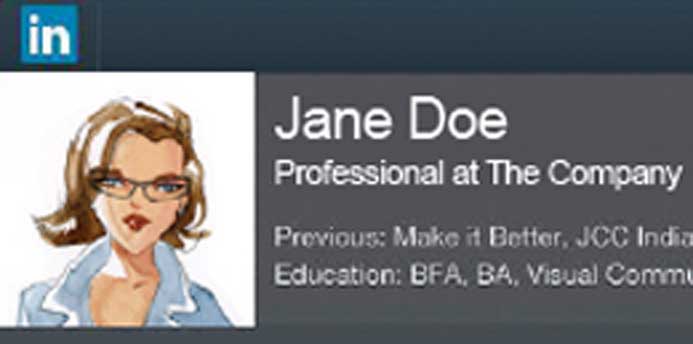Are you LinkedIn?
People are signing up to join LinkedIn at a rate of more than two new members per second. With more than 225 million members in more than 200 countries and territories, it’s the world’s largest digital professional network..
Since its inception in 2003, LinkedIn has grown to be the most developed business- and career-orientated networking site in the game. Additionally, more than 3 million businesses have their own pages. If you don’t have a LinkedIn profile yet, it’s time to sign up—whether you’re already established in your career, or you’re reentering the workforce again.
Here is how to create the perfect profile that will snag the attention of potential employers:
Picture
Your picture helps the person looking at your profile put a face with a name. It’s the best memory device for a recruiter as you create and reinforce your online brand. Use a professional headshot that doesn’t have a lot going on in the background. To extend your brand, use the same shot on your other social media sites.
Education
Plain and simple, it shows you’re educated. Be sure to list where you earned your degree, what degree you earned, and any special accomplishments, honors or organizations to which you belong.
Activity
Your “activity” on LinkedIn is similar to your Facebook wall, showing recent connections and endorsements, any changes you’ve made to your profile, or any status updates you post. Although they’re very similar, this isn’t the place to share what you ate for dinner. Keep it limited to professional-related items.
Background: Summary
The summary section reads as a short story about you. Include an overview of what you do, what types of positions you’re looking for and any key accomplishments. Upload presentations, videos, or any other relevant information to help recruiters get to know you. You can even upload your resume here for easy access.
Background: Experience
This section allows recruiters to evaluate your qualifications. Be specific with descriptions (think numbers, stats and project details). This is your brag board, so don’t be shy with your accomplishments!
LinkedIn’s Career Expert Nicole Williams says that it’s worth taking the time to enter past work experiences, even if you worked in a different industry.
“Your LinkedIn profile should be the opposite of your resume, which is where you typically only list your most recent work experience,” Williams says. “Hiring managers will perform searches for people with 10 years of experience, but if your profile doesn’t include information that far back, you could be missing out.”
Add that experience and you’re making yourself 12 times more likely to be viewed! Williams also encourages LinkedIn users to include internships and volunteer work to increase searchability.
Skills and Expertise
The skills section is crucial—the more, the better! After entering all the skills that you’ve acquired over the years, your connections can click the “+” button, which will automatically translate into an endorsement. Employers are now looking at endorsements more seriously than ever before.
Connections
Connecting your profile to others helps you establish and extend your network. It’s important to have a high-quality, diverse set of connections; you should aspire to be able to show insight regarding the individuals if someone were to seek your reference.
In a recent presentation, the founder of LinkedIn, Reid Hoffman, dissected the art of networking. “If you’re connected to a couple hundred people on LinkedIn, you’re actually the center of a network more than 2 million people strong.”
Suggestions to start? Connect with any past or current coworkers and employers, recruiters you’ve worked with, and former classmates and friends.
Recommendations/Reviews
Recommendations go a long way with potential employers, especially from senior-level connections. They can include work ethic, projects that you’ve previously worked on, and your understanding of the business. How do you obtain a recommendation? Kindly ask one or two senior-level employers to write one for you.
Groups
Don’t overlook the “groups” section. However, only join groups that are solely relevant to your experience and expertise. The pickier you are, the better.
“If you’re in an industry, look for the top-rated industry groups,” Williams says. “These people are attached to their professional affiliations. The kinds of discussions they’re having are very educated. The groups allow you to spread your working wings a little further without having to leave your home.”
What next? Start a meaningful topic in the groups you join, in order to get noticed by other group members whom you can potentially connect with. Follow up on comments within your topic, and ensure that your responses are meaningful.

